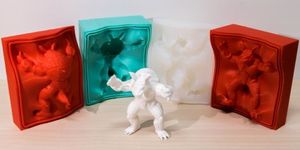Canceling Noise Without Ear-Blocking Headphones
Many people suffer from noise frustration due to disruptions such as “talking in the office corridor to road construction down the street to the neighbor's lawnmower”. Now, research at the University of Illinois' Coordinated Science Laboratory is seeking ways to improve noise frustration.
"Our goal is to not block the ear canal," explains Sheng Shen, lead author of the study and a Ph.D. candidate in the Coordinated Science Laboratory and Dept. of Electrical and Computer Engineering (ECE). "We envision a behind-the-ear device that still achieves noise cancellation as good as the best headphones or earbuds available today."
Currently, noise canceling technology consists of headphones or earbuds. Sometimes its as simple as fixing headphone connection issues. For headphones, canceling noise is short lived and for earbuds, wearing them for too long can be uncomfortable and even harmful. Therefore, the purpose behind this research study is to combine wireless IoT networks with noise cancellation where a “microphone is placed in the environment that senses sound and sends them over wireless signals to an earpiece”. The earphone can then receive sound information much faster than actual sound due to wireless signaling traveling a million times faster than the speed of sound.
"This is similar to lightning and thunder -- the lightning arrives much before the thunder, allowing people to prepare for the loud rumble," says Shen's advisor, Romit Roy Choudhury, an ECE Professor. "Similarly, our ear device gets the sound information in advance, and has much more time to produce a better anti-noise signal."

With every technology, there are pros and cons, and with the IoT microphone, it needs to be between the noise source and the individual which may bring privacy concerns. "The most common privacy concern is that the device will secretly record someone's voice," explains Shen. "This device is analog, so it has no capacity to record the sound. The moment the device hears the sound it is sent out wirelessly."
Overall, this particular research is already garnering a lot of attention in the field of computer networking and communications. "This is bound to change the way we think of noise cancellation, where networks of IoT sensors coordinate to enable quieter and more comfortable environments," says ECE Assistant Professor Haitham Hassanieh and co-author of the study.








